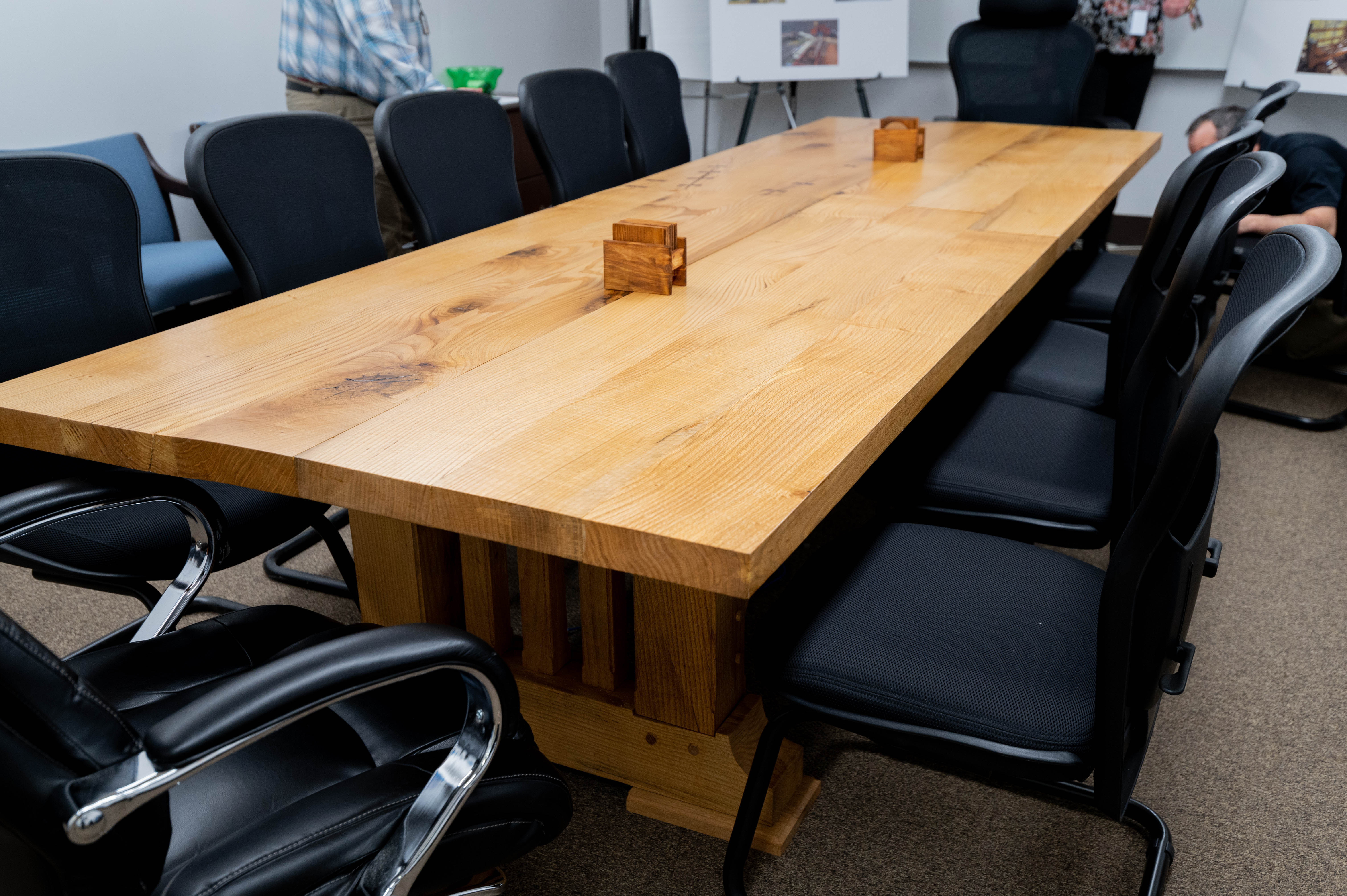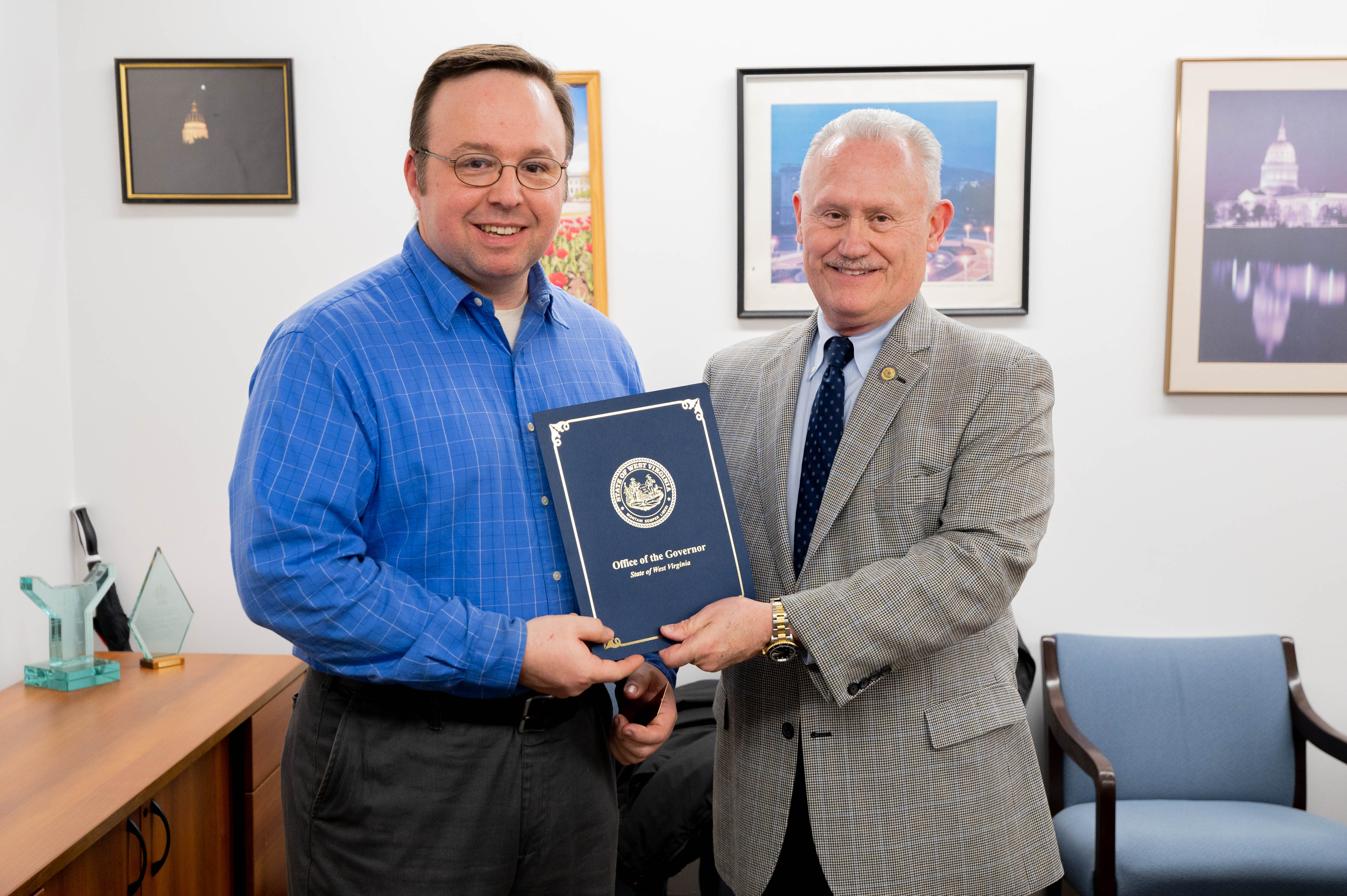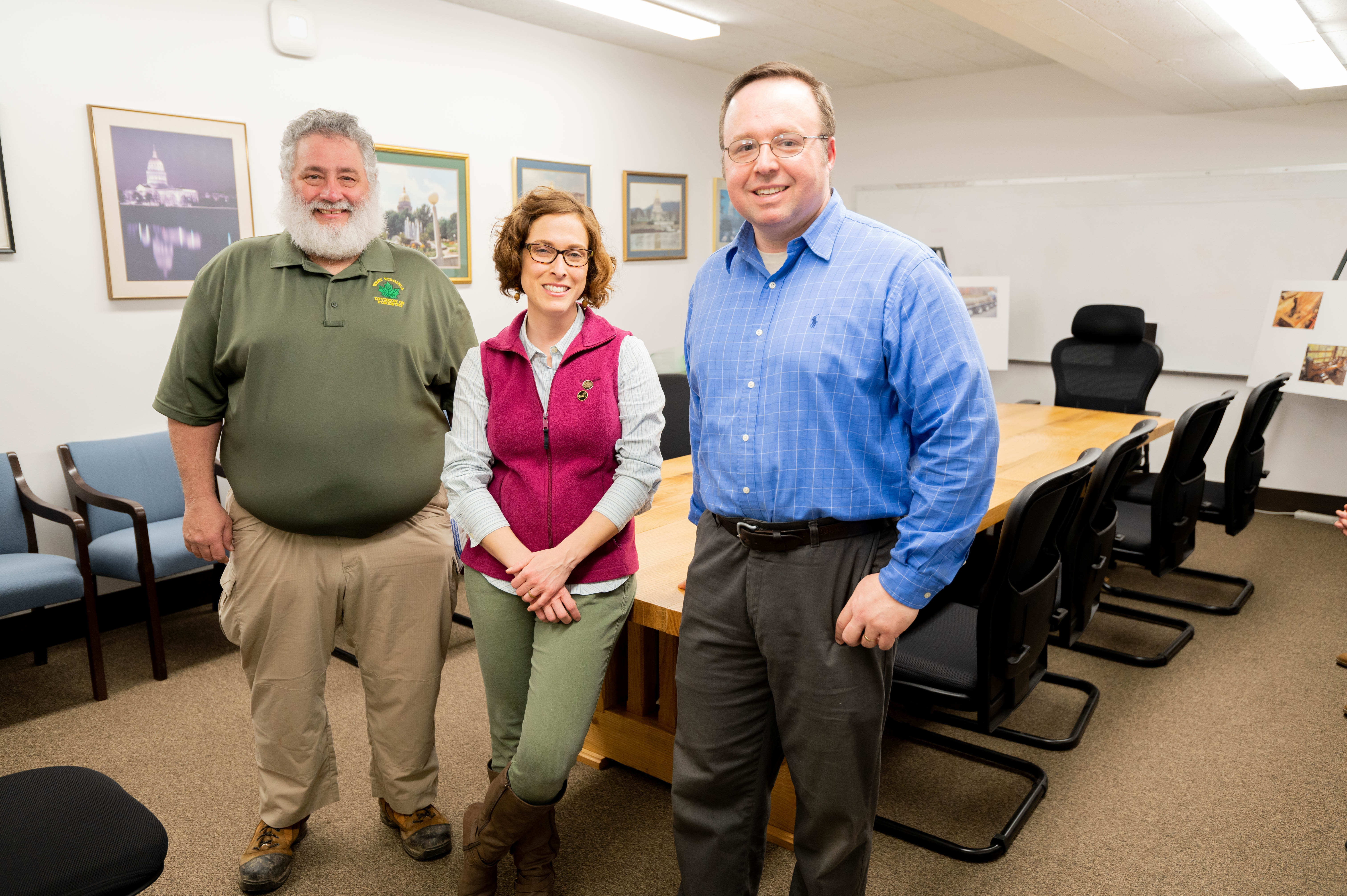Charleston, W. Va. -- A pin oak tree formerly standing
outside the west wing of the West Virginia capitol will now serve the state in
a new way, as a more than 800-pound conference table housed within the General
Services Division (GSD). Denton McDerment, an engineer with the Department of
Environmental Protection (DEP)’s Air Quality Division, designed and built the
table to extend the life of the tree that was present for so much of West
Virginia’s history.
After seeing an article in a local newspaper in 2017 about
the nearly 100-year-old tree’s impending removal, McDerment reached out to GSD
to inquire about the tree’s future. At the same time, GSD management and Urban
Foresters Andy Sheetz and Elizabeth Moss were having the same conversation.
Together, the decision was made to allow McDerment, who enjoys woodworking as a
hobby, to obtain the tree and convert it into a custom-designed piece of
property for the state of West Virginia. McDerment volunteered much of his free time over the next two
years crafting the table. While working on the project, he frequently sent progress
pictures to GSD Grounds Manager John Cummings. As McDerment neared completion
of the table, Cummings coordinated the delivery and staff to assist in moving
the table components into the Fifth Floor Conference Room of Building Four at
the capitol complex.
“When Denton and his sons delivered the table to us back in
January, we were in awe of Denton’s craftmanship,” Cummings said. “This is a
very good example of what can be done with our urban forests in West Virginia.
This table will last for many years. It is beautiful! It’s a good example of
what just one tree can provide.”
The table, standing at four feet wide, 12 feet long, and 2 ¼
inches thick, can be disassembled by removing screws from stainless steel angle
brackets that secure the top of the table to the base. The tabletop alone
weighs approximately 520 pounds.
Cummings shared that several factors are considered when
determining whether to remove a tree from the capitol campus, including safety
and aesthetics. For safety, GSD looks at the tree’s location and its risk of
damage to pedestrians, vehicles, and structures. For aesthetics, the grounds crew
looks at the shape, fullness, and health of the tree following the pruning of
deadwood. Deadwood includes tree branches and twigs that have died but are
still attached to the tree. Trees that are found to be hollow, rotten, or soft
are typically hauled away and disposed of. According to Cummings, in the case
of this oak tree, there was enough good, usable wood to complete the table project.
McDerment shared that he likes to obtain logs from removed
trees to convert into a variety of handcrafted items, including large custom
tables and furniture. He said, “When I read the newspaper article about the
tree removal, I thought this is an opportunity to turn a magnificent tree, that
perhaps has been admired for years… into a furnishing that can be used and
enjoyed for many years to come.”




